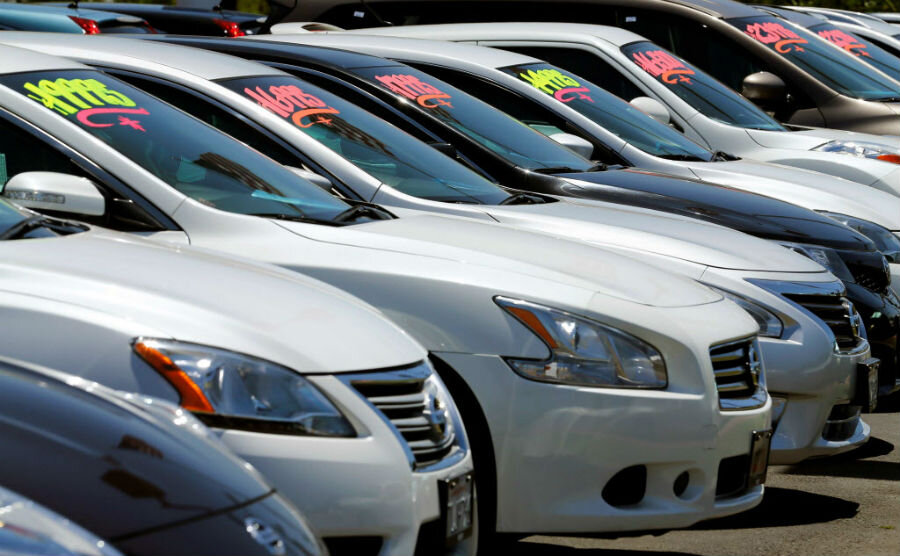Low May car sales signal shift in auto market
The numbers are in, and as expected, May's auto sales stats are nothing to write home about. Is this a sign that America's headed toward a recession repeat?
Probably not, but we may be witnessing a cool-down in the country's red-hot auto market.
Auto sales in the tank?
Without question, sales were off for most car companies last month--in fact, the year-over-year drop of six percent is the biggest tumble we've seen since August 2010. Comparing the Wall Street Journal's numbers from May 2016 with May 2015, those in the red included (in order of U.S. market share):
- General Motors (down 18 percent)
- Ford (down 6.1 percent)
- Toyota (down 9.6 percent)
- Honda (down 4.8 percent)
- Nissan (down 1 percent)
- Mazda (down 4.3 percent)
- Mitsubishi (down 5.7 percent)
- Mercedes-Benz (down 0.6 percent)
- Volkswagen (down 17.2 percent)
- BMW (down 6.4 percent)
- Fiat (down 18.9 percent)
- Land Rover (down 8 percent)
- Mini (down 21.2 percent)
However, there was more than a little upward movement, too:
- Fiat Chrysler (up 1.5 percent)
- Hyundai (up 11.6 percent)
- Kia (up 0.8 percent)
- Subaru (up 1.1 percent)
- Volvo (up 10.2 percent)
- Audi (up 1.6 percent)
- Porsche (up 7.3 percent)
- Tesla (up 55.3 percent)
- Jaguar (up 79.7 percent)
So, why the drop between May 2015 and May 2016?
One of the biggest factors is that May 2016 had two fewer selling days. Those lost sales could've put close-calls like Nissan, Mercedes-Benz, and Honda in the black.
Some automakers, like GM, also blame inventory shortages for the slip in sales--though whether full lots could've erased GM's 18-point slide is up for debate.
But to be perfectly honest, we don't entirely know why sales fell so far in May. Consumer spending is at a six-year high, and as Ford's Mark LaNeve noted yesterday, there are many factors in place--notably, low interest rates, low gas prices, high employment, a strong housing market, larger incentives for car-buyers--that should've led to an increase in sales.
And yet, they didn't.
So, we could be looking at a momentary aberration, or the auto market may be signaling that it's preparing to behave in new ways.
Paradigm shift
The chart at the top of this page provides an interesting snapshot of today's auto market. As you can see, car sales are off across the board -- both year-over-year and year-to-date. (This is a lesson that crossover-averse automakers like Volkswagen have had to learn the hard way.) In fact, year-to-date declines in every segment are in the double-digits.
The big winners are clearly among pickups, crossovers, vans, and SUVs, with a special shout-out to the minivan, up 30.3 percent in the first five months of 2016.
What does that mean? Our hunch is that Americans have spent the past several years gobbling up larger vehicles for their businesses and their families, and with today's low gas prices, there's no pressure to trade in those vehicles for smaller, fuel-efficient models. Until that happens, auto sales may remain fairly flat.
Of course, gas prices will eventually start climbing again. The question is: when they do, will it matter? Will we have already moved on?
Tomorrow's auto market
Not so long ago, car sales stats were a fair reflection of the U.S. economy. However, emerging technologies and modes of transportation could change that by upending the way that automakers do business.
Obviously, electric cars are a game-changer. They'll have profound effects on the environment (largely positive ones) and on petroleum-producing nations (largely negative ones).
But the real game-changer will be autonomous cars. Not just because those cars will make roads safer and extend the lives of our vehicles, but also because they'll allow us to use cars more efficiently. As we've discussed before, autonomous cars will initially cause an increase in auto sales, as consumers transition to them. In the end, though, fewer cars will be needed and bought. In fact, self-driving vehicles could cut auto sales by 50 percent.
Of course, autonomous cars haven't truly arrived--Tesla's Autopilot notwithstanding--and last month's sales dip may simply be a sign of market saturation. Whether the declines will continue remains to be seen, but year-to-date sales are still up 1.2 percent overall.
That said, as self-driving vehicles roll out over the next five to ten years, automakers will need to change their business models. (GM and Toyota have already gotten that memo.) And as that happens, auto sales could stop being the "canary in the coal mine" for the U.S. economy.
This article first appeared at The Car Connection.






